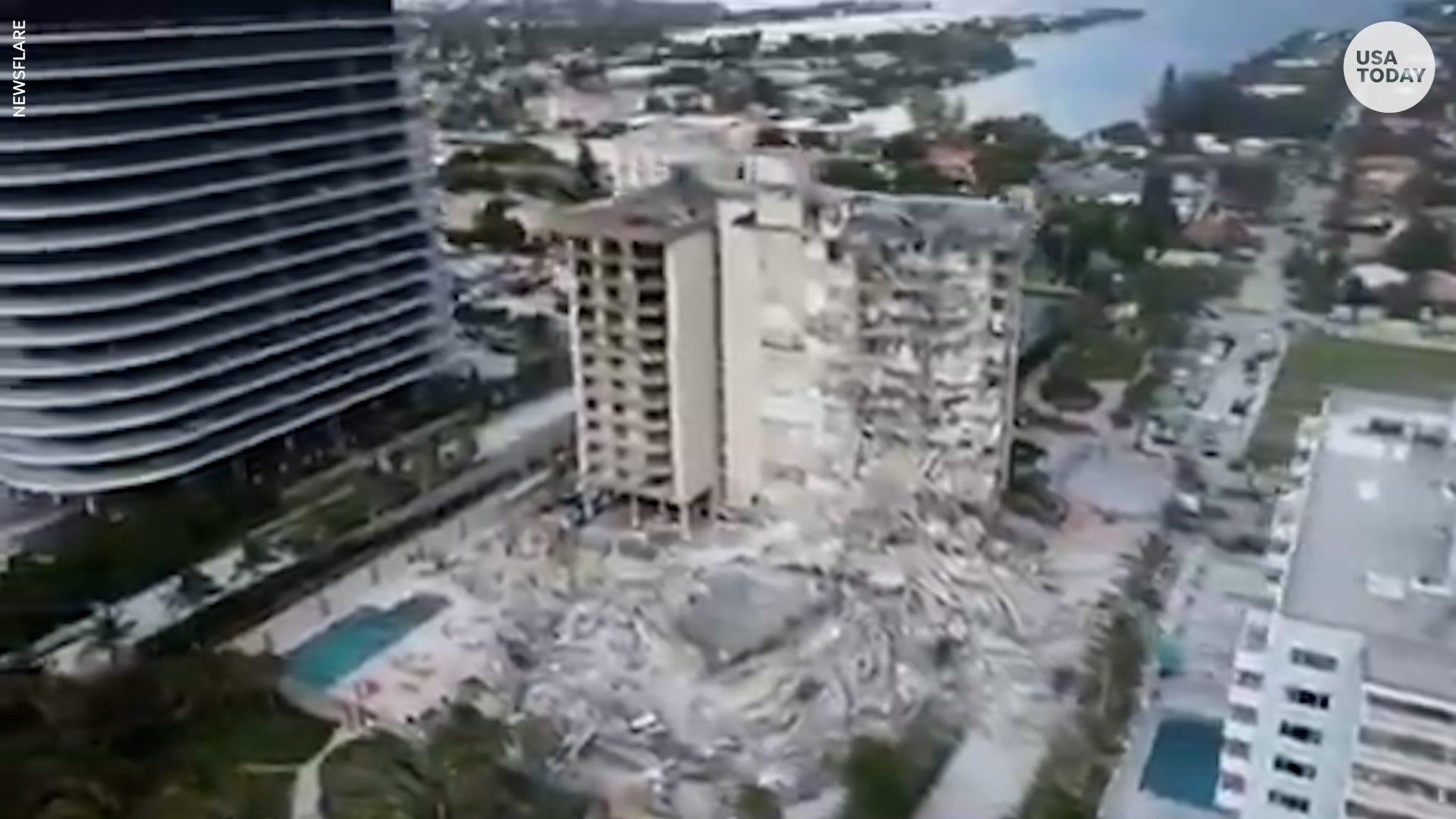Surfside building: Engineer who probed FIU bridge collapse to investigate Surfside condo
John Pistorino, a veteran Miami structural engineer who helped write Florida's building codes, has been hired to investigate the partial collapse of a Surfside condominium early Thursday morning.
Pistorino on Thursday said he had been retained to help determine why parts of the Champlain Towers South Condo collapsed. As of Thursday afternoon, at least one person is dead and many more are missing.
Pistorino, a principal at Pistorino & Alam Consulting Engineers in South Miami, would not disclose who hired him. But he has long been considered the go-to engineer for major structural problems, and he authored guidelines for inspection of decades-old buildings.
Miami-Dade and Broward counties require inspections when a building hits the 40-year mark. But Palm Beach County does not, according to Spencer Sax, a Boca Raton attorney who specializes in construction litigation.
The latest: Condo building partially collapses near Miami; 37 people rescued; at least 1 dead
Live updates: Gov. Ron DeSantis assesses aftermath; search and rescue efforts continue at Miami building collapse
Pistorino probed FIU pedestrian bridge collapse
When a pedestrian bridge next to Florida International University collapsed in 2018, killing six people, Pistorino was among the engineers who evaluated the disaster. Calculation errors made by the bridge's engineers were later found to be the main cause of the fatal collapse.
Pistorino said he was notified early Thursday of the partial collapse of the 12-story oceanfront condo in Surfside, at 8777 Collins Ave.
"This is terrible," Pistorino said. "I was involved in the investigation of the bridge collapse at FIU, and this makes it a much bigger disaster than even that because of the loss of life. This is just unbelievable."
Pistorino authored inspection reports after 1974 Miami building disaster
Pistorino literally wrote the book on Miami-Dade County inspection reports. He authored guidelines for inspecting buildings when they hit the 40-year mark, and then every ten years after that, following a 1974 collapse of a four-story building in downtown Miami.
"I'm beside myself that a building as young as 1980" would suffer such a catastrophic failure, Pistorino said. "This should not have happened."
Pistorino would not speculate on the cause of the Surfside condo's partial collapse, saying that he must carefully inspect the evidence before making any determination. But he was struck by a surveillance video that showed the collapse started in the center of the building, an event that then pulled down the entire north section of the building.
Video of Surfside building disaster 'tell-tale'
"The video is very tell-tale," he said. "It shows the center section collapsing all the way down, and then the tower on the northeast still standing, then it collapsed and pancaked."
Steven Lesser, an attorney for the condominium association, said he would not comment on details of the building's collapse.
"We're concerned with the residents that can't be located," Lesser said.
Lesser said the association "awaits the outcome of the engineering analysis that will be done."
The Surfside condo, which was constructed in 1981 on reclaimed wetlands, has been sinking at an alarming rate since the 1990s, according to a 2020 study conducted by Shimon Wdowinski, a professor in the Department of Earth and Environment at FIU.
Wdowinski said his research is not meant to suggest any certainty about what caused the collapse of the condominium. The building was sinking at a rate of about 2 millimeters a year in the 1990s, and the sinking could have slowed or accelerated in the time since.
West Palm Beach engineer Jeffrey Bergmann cautioned against jumping to conclusions about the cause of the collapse. Often, more than one issue factors into an event, a situation known as overdetermination.
Bergmann said buildings five stories and higher, whether they are built on fill, sand or in the water, are built using deep pilings in their foundations. The pilings are driven into the limestone, which in Miami-Dade County can just be a few feet below the surface, said Bergman, director of specialty structures at the West Palm Beach office of WGI, an engineering firm.
There are other factors to consider for a building along the coast, experts said.
Speaking generally, Pistorino said buildings along the ocean are vulnerable to salt and saltwater intrusion, making regular inspections and maintenance on these buildings critical.
Gov. DeSantis' response: 'Tragic day': Florida Gov. DeSantis on Surfside building collapse, rescue efforts
A closer look: Closer look at Champlain Towers South, the Florida building that partially collapsed
More on Champlain Towers South: What we know about the building, units affected

The 40-year inspection threshold contains a list of numerous items that need to be checked, but he said maintenance still should be an ongoing process.
This maintenance includes evaluating garage foundation columns and balconies made of concrete slabs, both of which are most exposed to water. Over time, salt in the water can corrode the concrete that surrounds the steel bars inside the building, damaging the building's structural integrity.
Construction rules have evolved to require waterproofing of buildings to limit saltwater intrusion, Pistorino said. But even something as simple as regular exterior painting can help protect a building from water and salt, he added.
Overall, construction standards in the 1980s do not compare to today, said Sax, the Boca Raton attorney. Sax said lawsuits over poorly-built structures in the 1980s and 1990s led to improved construction standards.
Roofs, for instance, sometimes were installed in the 1980s with a lightweight concrete that could allow water intrusion, Sax said.
And construction standards now require measures to prevent water intrusion into the post-tension cabling used between structural columns. These measures include protecting the cabling end caps with special pockets that prevent water from damaging the steel cables, which can affect a building's structural integrity, said Sax, who represents condominium associations in Miami-Dade County, as well as Broward and Palm Beach counties.
USA Today contributed to this report.